Colnago ditches the traditional diamond frame for its radical new Y1Rs - 'the most aerodynamic UCI-compliant road bike in the World Tour'
Designed in conjunction with Team UAE and the result of years of innovative R&D Colnago's Y1Rs cuts a progressive departure from the existing VR4s. Is this the shape of things to come?
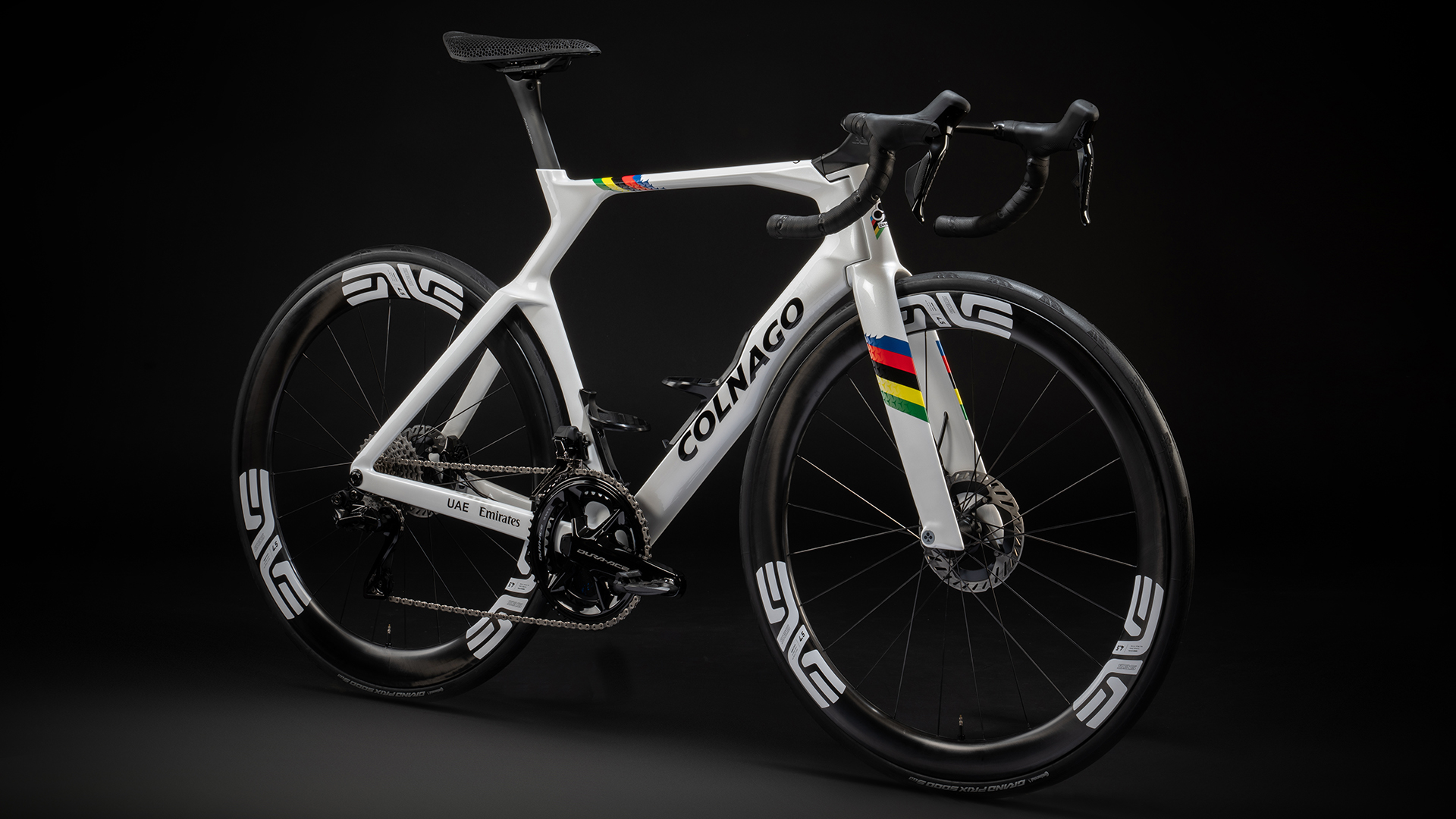
Simon Fellows
Colnago has launched the Y1Rs, a dedicated aero race bike.
Designed for professionals and top amateurs it will be raced by Team UAE during the 2025 season and is, Colnago says, the culmination of years of effort. The result is a bike that features innovative tube shapes, aggressive geometry, its own integrated aero cockpit and, most strikingly, no main triangle. That's right, Colnago has ditched the main triangle, replacing it with an irregular pentagon.
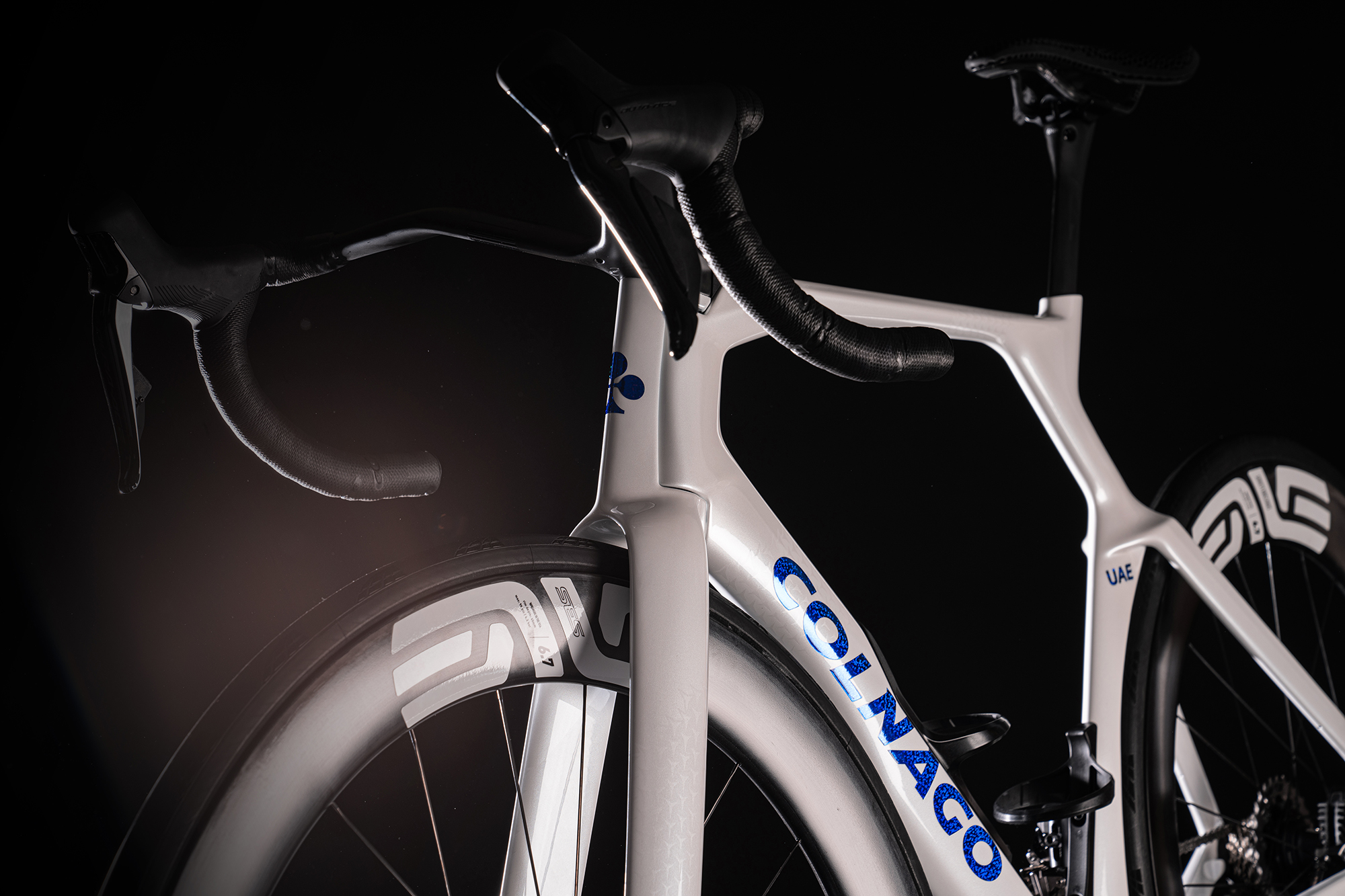
The distinctive head tube and seatpost/seat tube areas are radical departures
Without an aero bike in its lineup, the Italian brand began work on the Y1Rs in part at the behest of the UAE Team who requested an alternative to the VR4s for flatter stages, but also because of the changes to UCI regulations regarding frame design.
“We started working on this bike in late 2021, which makes it the longest bike development in Colnago’s history,” says Davide Fumagalli, Head of R&D at Colnago. “We haven’t had an aero bike in our range since 2016 because, up until now, we haven’t found a significant benefit in performance over a bike like the V4Rs.
“So, why did we change our minds? Because with the change in two UCI rules, we recognised the opportunity to create a bike that is substantially better. The three-to-one aspect ratio rule [that stipulated that bar and stem tube depths cannot be more than three times their width] was dropped in favour of imposing an 80mm maximum and 10mm cross-section, which has enabled us to reduce the frontal area of the bike.
"The other rule enables us to place the seat post anywhere along the top tube; it no longer needs to be connected to the seat tube.”
If Tadej Pogačar - UAE's top rider and 2024's seemingly unbeatable Tour de France winner - comes calling it’s understandable that you’d want to oblige. Colnago chose to answer the demands for a focused aero bike by challenging the norms of modern race bike design. Partnering with two universities on the project, the Politecnico di Milano in Italy and Khalifa University in Abu Dhabi, it adopted a scientific approach that expanded on computational fluid dynamics (CFD) testing in pursuit of greater accuracy.
“We just didn't do the computational fluid dynamics testing that other brands are doing because we found that the mathematical modelling behind those tests was not accurate enough,” says Fumagalli. “We needed to improve the model and we did that by increasing the number of pressure sensors to 75, which gave us far more data. This helped us to change direction on a number of ideas, including the position of the downtube in relation to the wheels.”

Colnago believes that extensive wind tunnel testing has revealed a model that’s “twice as accurate” as any other within the industry
A brief explanation. A CFD prototype was created but Colnago wanted to create a “more descriptive and accurate model”. To do so it turned to 3D printing, allowing it to create several prototypes that replicated the shape and surfaces of the carbon prototype. Using the 3D printed prototypes it drilled a number of small holes at regular distances across the surface of the frame, with each hole connected by a thin tube. From here Colnago could measure the pressure of the air on the surface of the bike with great precision and across the entire bike. It then compared this data with numbers collected from the CFD models to enable them to refine the frame design yet further.
Colnago says it's a model that’s “twice as accurate” as the industry standard, resulting in an aero bike that is “the most aerodynamic UCI-compliant road bike in the World Tour.”
So what innovations did this accurate data produce?
The Y1Rs is certainly a distinctive-looking bike, with a few areas that catch the eye. From front to back, the bike looks to make aerodynamic improvements over the V4Rs. The headset design takes advantage of the new UCI ruling that allows for larger lateral surfaces. Colnago has increased the headset area but made the bearings smaller, with the fork containing both an internal section and a frontal section designed to improve how lateral air flows impact the front of the bike.
“The headset is the smallest I have ever seen on a road bike, and part of a very complex puzzle on the geometry side,” says Fumagalli.
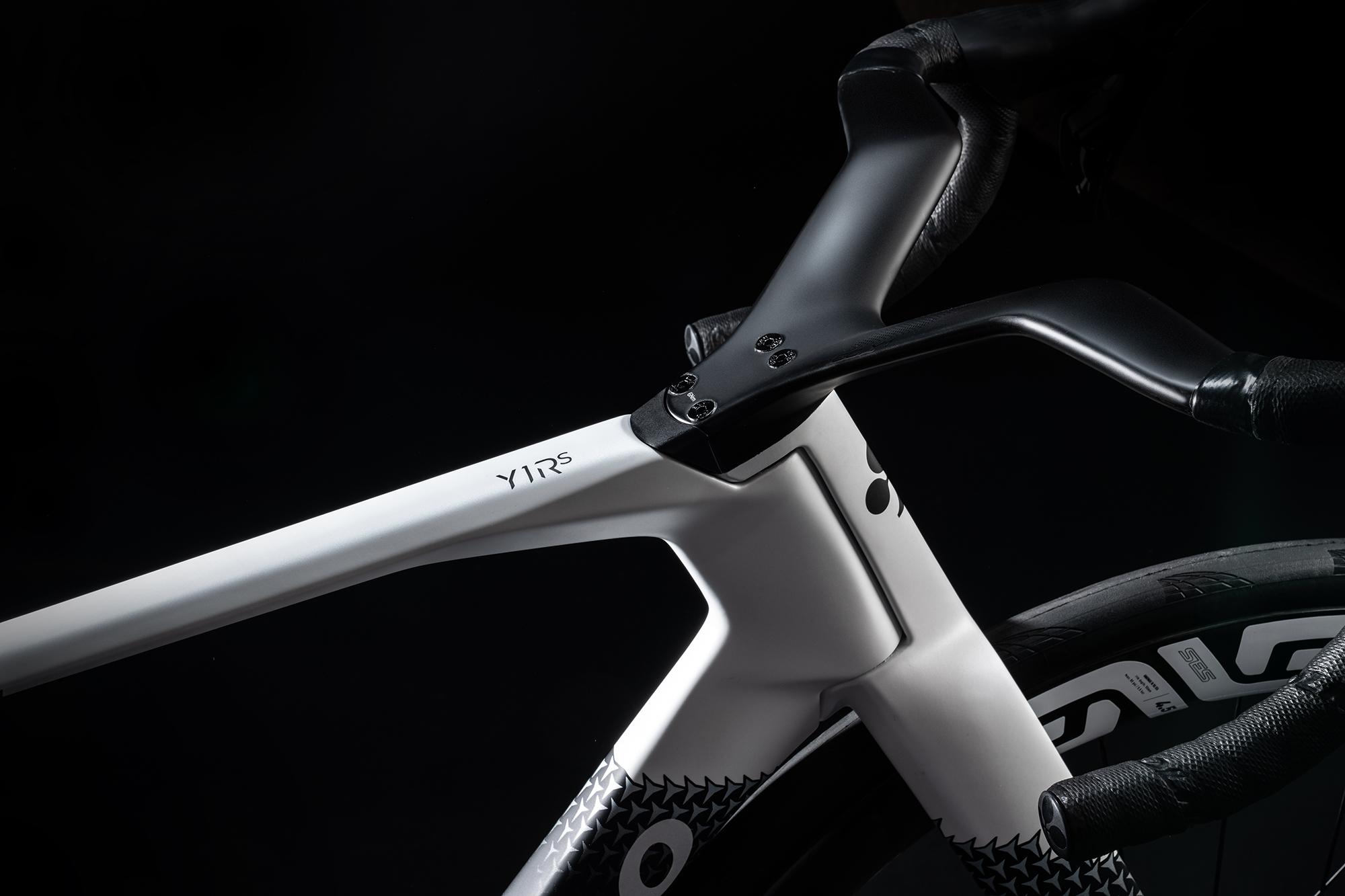
The headset is tiny, and a 'very complex puzzle'
The new CC.Y1 handlebars continue the theme. Featuring a ‘gull wing’ structure, the tops are raised and detached from the centre of the bars and the headset to create a Y-shape. This allows the frontal area to be reduced, which translates to “faster and cleaner” airflow around the bike. Colnago says it equates to a 19% reduction compared to the V4Rs.
The horizontal portion of the bars is directly connected to the top of the headtube, made possible, Colnago says, by its choice of carbon layup. It also claims the bars are 16% stiffer than “selected reference handlebars” both vertically and laterally - ideal for sprinting. Both the bars and the headtube are ‘paired’ with a bayonet fork.
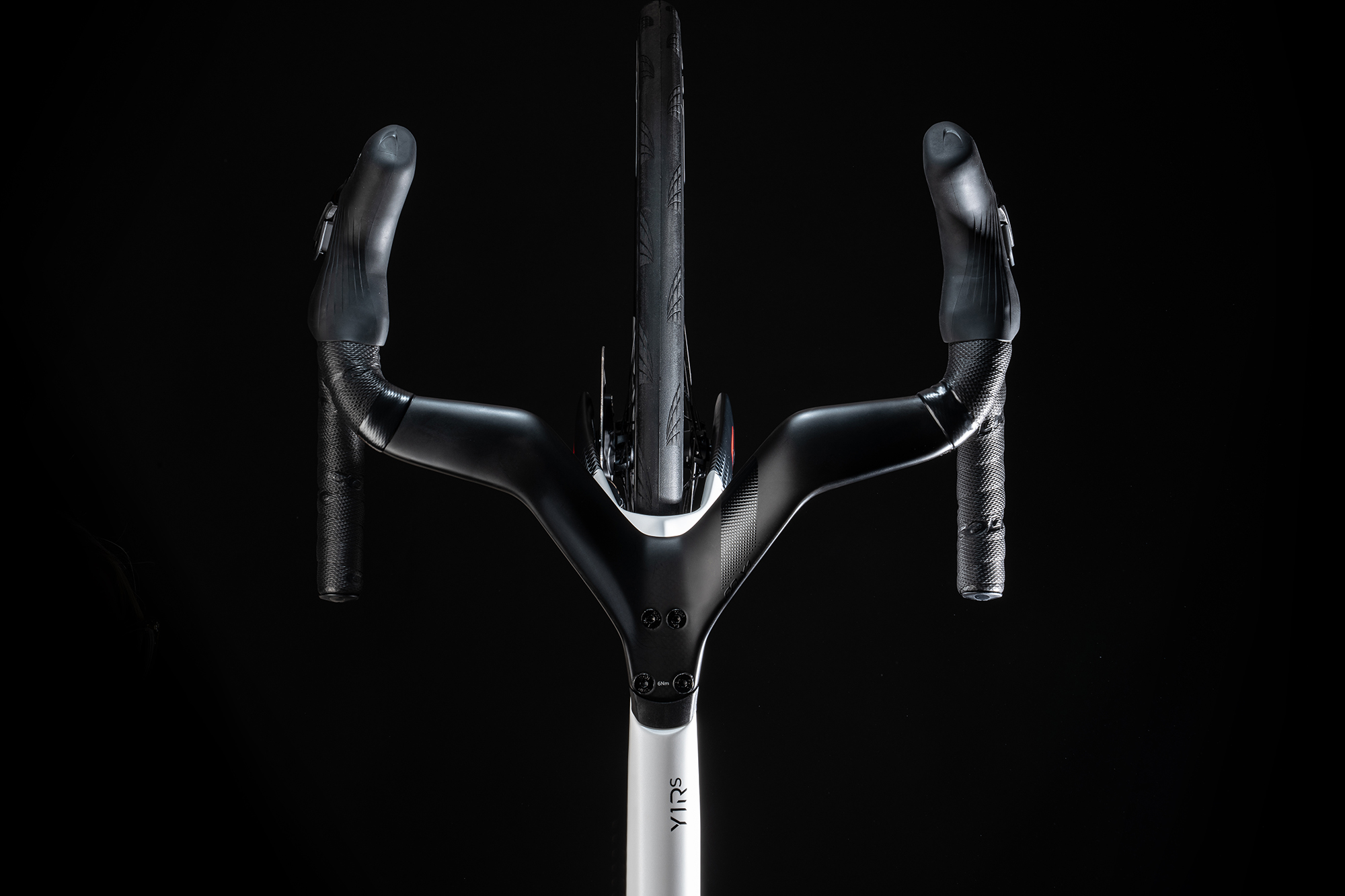
The Y-shaped bars have been optimised for aero and sprinting
This funky-looking downtube is also home to an integrated bottle cage, with another on the seat tube. Colnago has designed the cages to match the shape of the frame, which reduces the drag caused by the bottles. The cage also supports a Di2 battery. Interestingly though it doesn’t use dedicated ‘aero’ bottles.
“We started designing and testing the frame with an integrated bottle but when we discussed it with the team they said no, we don’t want to integrate the bottle because we have two different bikes to think about and riders grabbing bottles from the [team] car,” says Fumagalli. “So we had to revert back to normal bottles and that influenced completely the shape of the downtube.
"But, we were able to remodel the whole frame knowing that the tests we were performing with CFD were already validated, so we were able to trust them. We were able to make seven different bottle cage types and understand which was the best.”
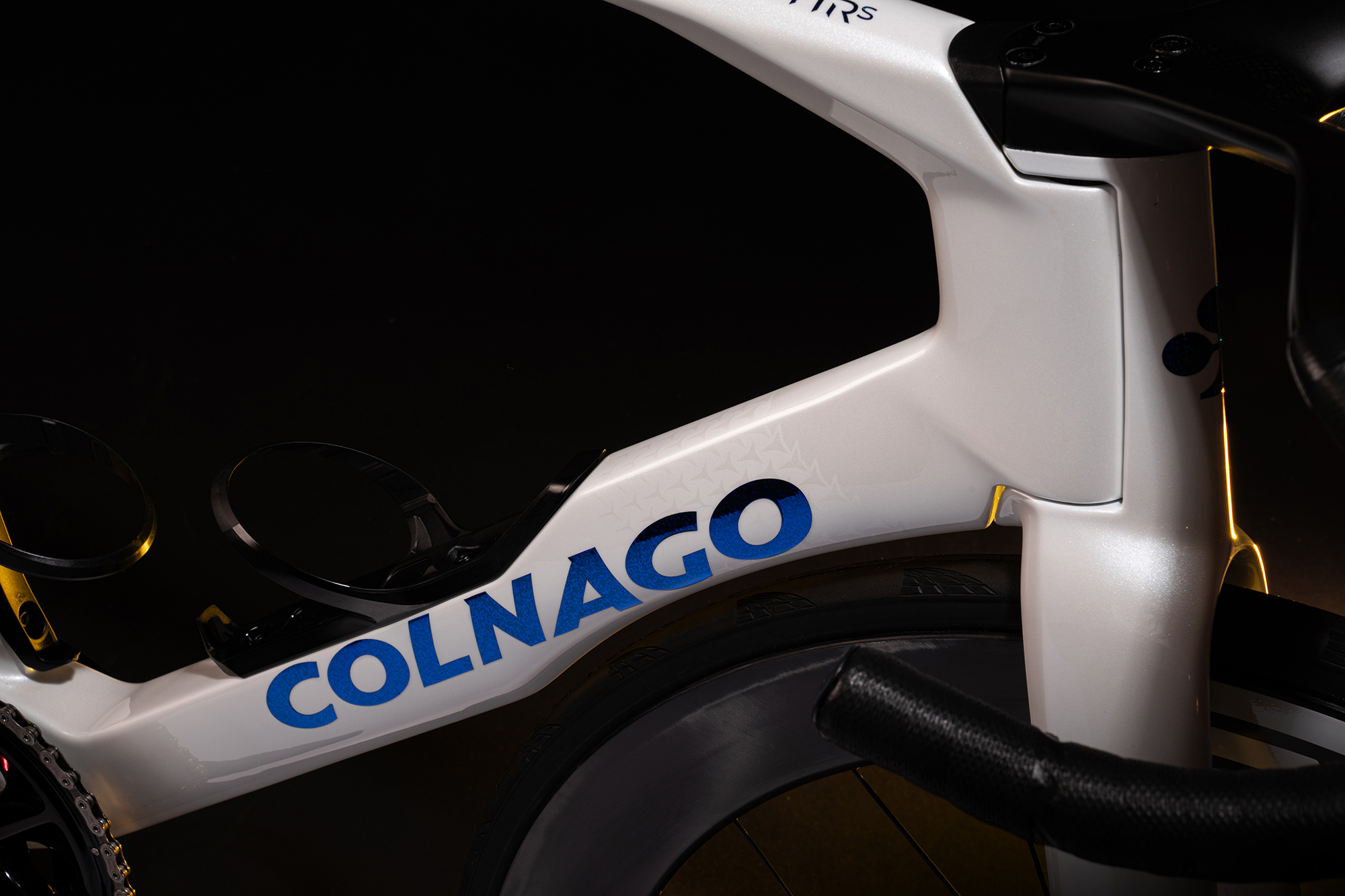
Space between the wheel and down tube varies for optimal aerodynamics
Moving upwards takes you to perhaps the most eye-catching area of the Y1Rs - the seatpost junction. Colnago describes it as having the shape of “two linked Ys, one of which is upside down.” It’s perhaps easier just to look at it. In some ways, it’s not too dissimilar in appearance to the IsoFlow area on Trek’s aero race bike, the Madone.
Here there’s no hole, but the design, like that used on the Madone, is there in part to make the bike more compliant. While comfort isn’t typically a priority for professional riders, the knock on traditional aero bikes was that in an effort to make them as stiff as possible they also became a chore to ride, especially during longer stages or day races. To combat this, Colnago has created the Defy seatpost joint that it says increases vertical compliance.
Working in conjunction with the Defy seatpost, greater compliance is achieved by increasing the angle of the seat post to get higher radial deflection; in essence, it’s the angle that creates more comfort. The seat tube also follows the shape of the rear wheel, which Colanago says enables it to be more aerodynamically effective.
“The Y1Rs provides a much more forgiving ride. Some of our competitors are approaching this in a very different way, using very complex designs or a suspension system of some kind. Our solution doesn’t compromise the lateral or torsional stiffness of the frame,” says Fumagalli.
“Of course, if you move the seat post it can complicate other areas of the geometry, which can be challenging because riders prefer to stay in more or less the same riding position they are used to (on a conventional bike). So, we experimented with many positions for the seat post before settling on this one. Placing the seatpost where we did gives more space for airflow to reattach to the bike.”
Colnago's Davide Fumagalli on UCI rules changes
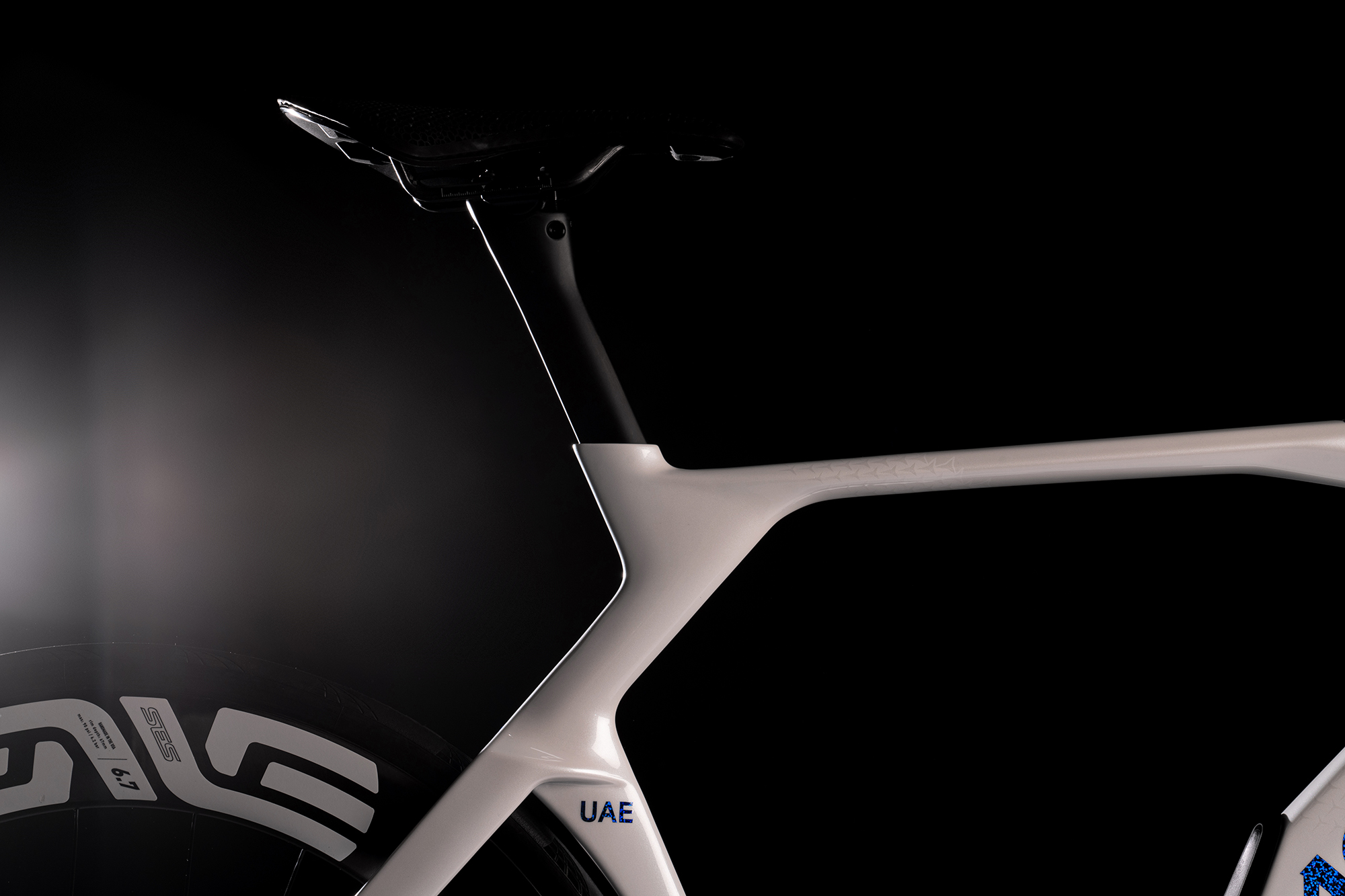
"I think that the new UCI rules that allow the seat post to be anywhere on the top tube is a dramatic change because it opens up a completely new shape for the design of the frame. To be honest, I'm shocked that no one else has jumped on board because, on some of the other preliminary sketches, the frame shape was way more radical. So, I think you will see something very, very nice in the next few years because, speaking like an engineer, we finally have some freedom.
"If I could change one further UCI rule it would be the sloping box regulation that dictates that ‘the top tube may slope, provided that this element fits within a horizontal template defined by a maximum height of 16 cm’. It would not necessarily make the bike faster but it would enable us to make bikes with different frame shapes. We want the new generations to look at a bike and see something futuristic. Something with which we are opening their hearts as a design thing, and not a bike thing. We need to provide them with something cool, not a traditional bike with a double triangle. We need to showcase to the next generation that we are moving forward with a faster and better product."
The release of a modern aero bike wouldn’t be complete without some numbers derived from all that testing. When it comes to the Y1Rs the most interesting of these are made in comparison to the V4Rs. After all, the bike owes its very existence to its ability to outperform the V4Rs in certain areas.
Colnago says the new bike is some 20 watts faster than the all-rounder. Digging into the numbers in a bit more detail, at 50km/h with a zero-degree yaw angle, the Y1Rs required 395 watts of output compared to the V4Rs. With varying yaw angles accounted for, these numbers were 474 and 499 respectively. Testing was undertaken using a mannequin dressed in WorldTour clothing, with the bikes fitted with two bottle cages and one bottle. Colango says the Y1Rs outperforms its nearest rival too, by a single watt at 0 degrees and 8 watts using weighted average drag numbers. It doesn’t name the competitor though, of course.
Another comparison that will interest both the pros and amateurs alike is the comparable weight of the two race bikes. While it’s no surprise the V4Rs is lighter, it’s not by perhaps as great a margin as you might think. Colango says the claimed weight of the Y1Rs for the frame and forks is 1415g, making it just 242 grams heavier than the VR4s.
Offered in five sizes, the Y1Rs adopts different geometry to the VR4s.. Both the headtube and seat tube angles are steeper, which Colnago says helps promote a more forward-orientated ‘tucked’ rider position. Similarly, the reach and stack ratio has also been increased to accommodate a lower, more aggressive position. So will Pogi feel at home aboard the Y1Rs?
“The seat position and the bar position are similar to Tadej’s existing bike, so he will fit very well,” says Fumaggli. “ But the wheelbase is shorter, the headtube angle is different, the fork rake is different. The team wanted something fast for sprints, so we have moved away from our traditional geometry, which is slightly more relaxed and a bit longer.”
But given the success that the UAE team has had aboard the VR4s, how will the Y1Rs fit into their racing lineup?
“Team UAE are still testing both frames with a lot of different components, especially wheels and tyres. There is no clear switching point between the VR4s and the Y1Rs, a lot comes down to wheel choice. On some terrain, the VR4s with deeper wheels will be faster than Y1Rs with shallower wheels and vice versa,” says Fumagalli.
“More generally, the Y1Rs is mainly for fast-rolling stages and flat stages. I don’t see this bike being used with very shallow wheels, just like I don’t see the V4Rs being used with very deep wheels anymore.”
The Y1Rs is offered in a number of full-build configurations, starting at €12,300. It’s also available as a frame kit only, priced at €6,710.
For more information, visit colnago.com

Thank you for reading 20 articles this month* Join now for unlimited access
Enjoy your first month for just £1 / $1 / €1
*Read 5 free articles per month without a subscription

Join now for unlimited access
Try first month for just £1 / $1 / €1
Get The Leadout Newsletter
The latest race content, interviews, features, reviews and expert buying guides, direct to your inbox!
Luke Friend has worked as a writer, editor and copywriter for twenty five years. Across books, magazines and websites, he's covered a broad range of topics for a range of clients including Major League Baseball, the National Trust and the NHS. He has an MA in Professional Writing from Falmouth University and is a qualified bicycle mechanic. He has been a cycling enthusiast from an early age, partly due to watching the Tour de France on TV. He's a keen follower of bike racing to this day as well as a regular road and gravel rider.
You must confirm your public display name before commenting
Please logout and then login again, you will then be prompted to enter your display name.
-
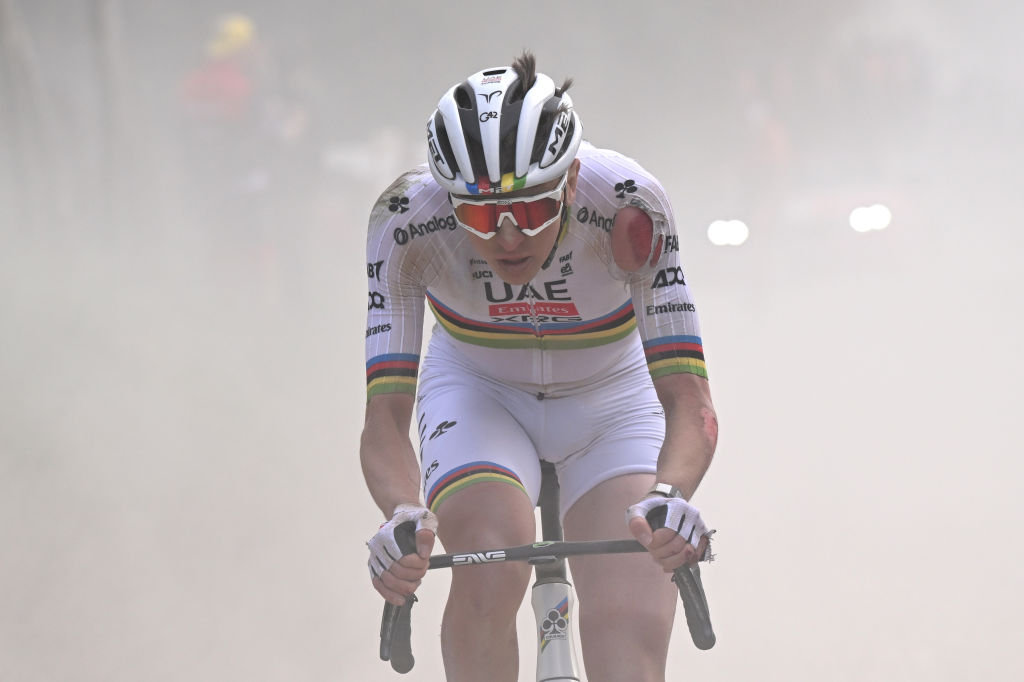 Tadej Pogačar's MET Trenta 3K Carbon is one of the best road cycling helmets on the market – grab it now with 26% off at Tredz
Tadej Pogačar's MET Trenta 3K Carbon is one of the best road cycling helmets on the market – grab it now with 26% off at TredzDeals The MET Trenta features enhanced safety and performance tech including MIPS AIR and now with a whopping £80 reduction, it's a bargain buy
By Paul Brett
-
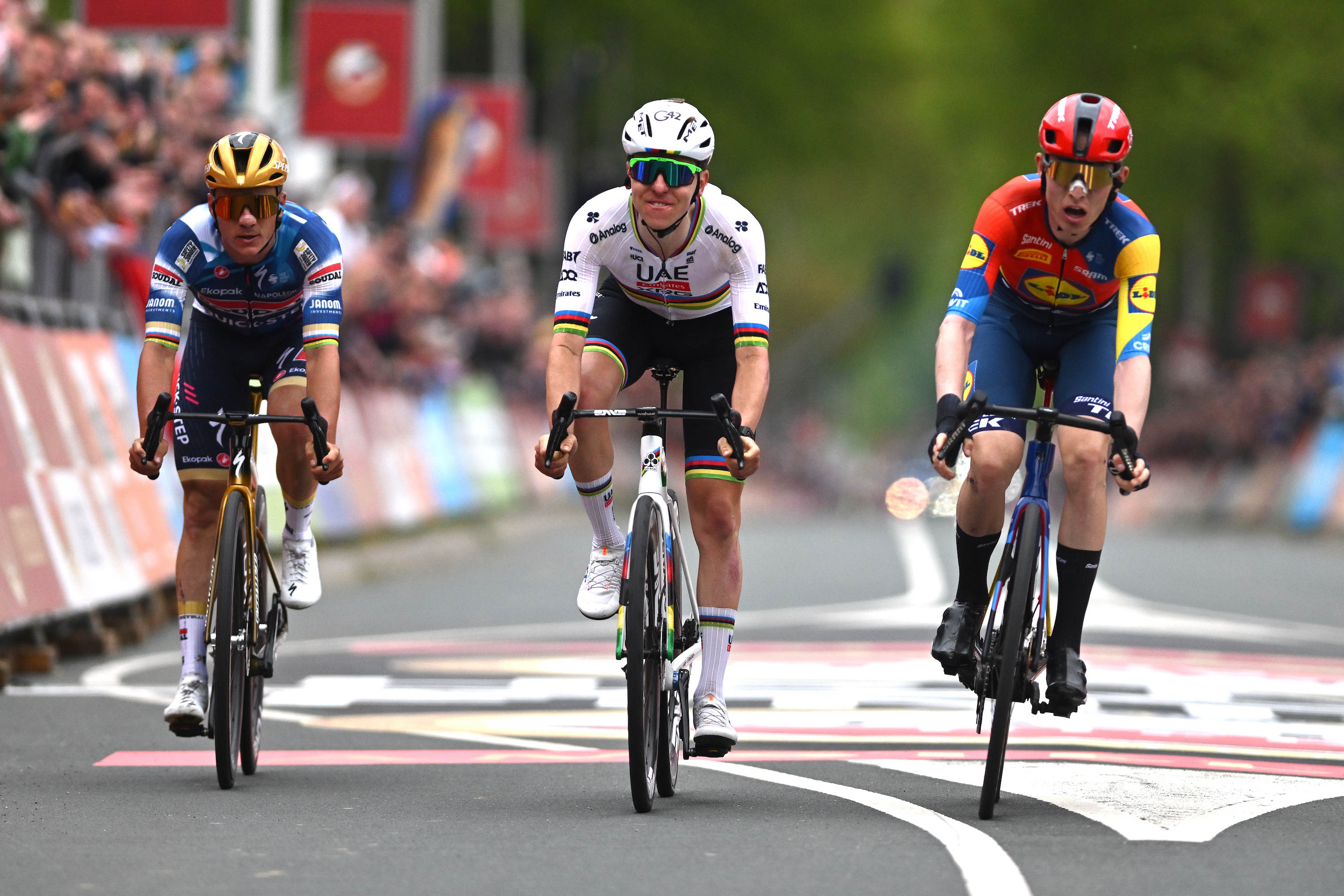 Tadej Pogačar has shown he's fallible - and that's a good thing
Tadej Pogačar has shown he's fallible - and that's a good thingThe Slovenian won’t enjoy losing, but it’s better for brand Pog that he sometimes does
By Adam Becket